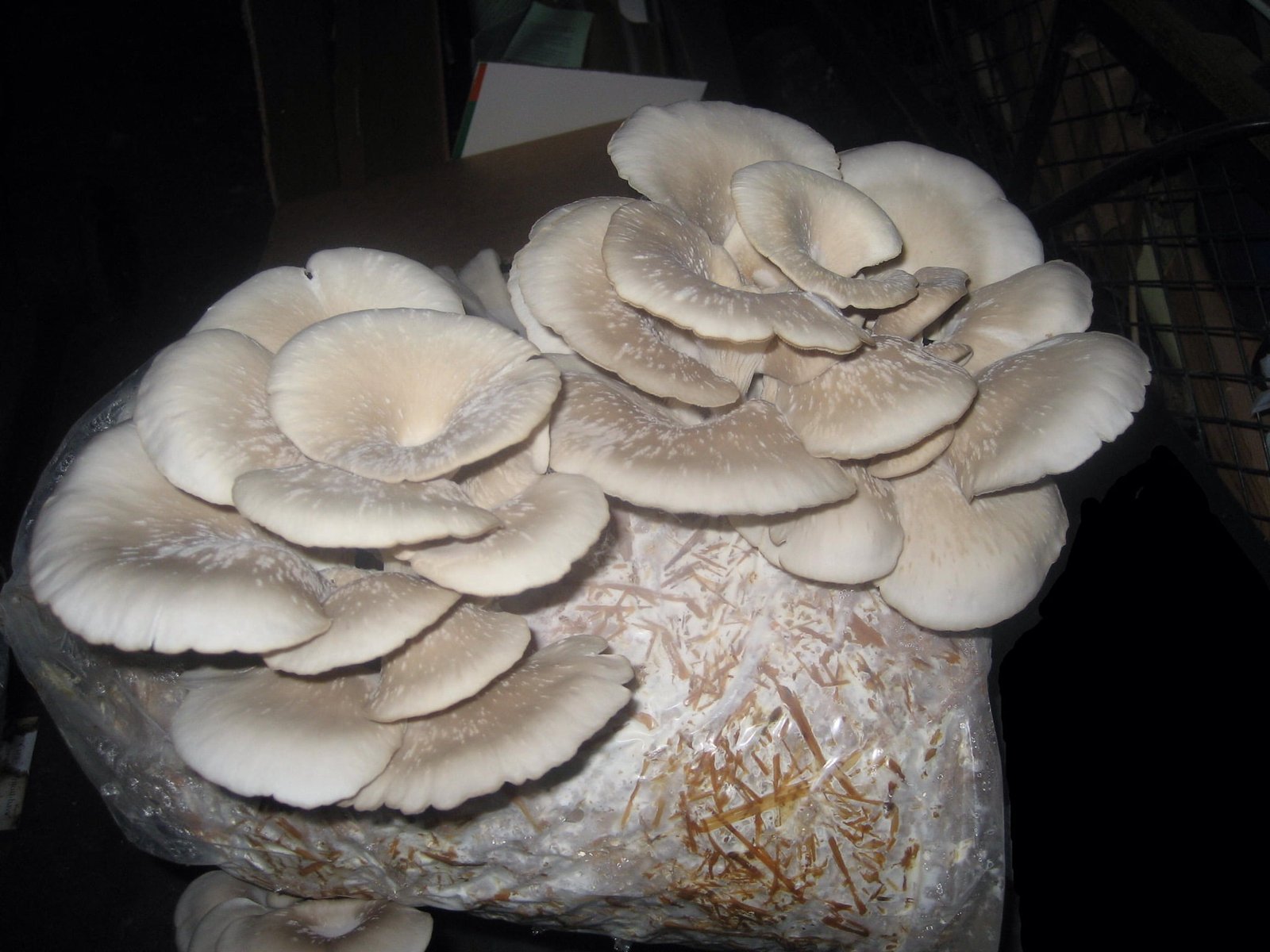In the United States, oyster mushroom production is increasing day by day. In today’s blog, we’ll discuss oyster mushroom cultivation from spawn to postharvest managing and marketing, paddy straw mushroom, and much more.
Oyster Mushroom Cultivation
Basically, oyster mushroom plants develop naturally in the tropical forests on decaying wooden logs or coniferous woods. Oyster mushrooms grow on decaying organic matter. The shell of mushrooms has different shades of cream, white, yellow, grey, light brown, or pink, and it will depend on the species.
The third-largest cultivated mushrooms are oyster mushrooms. In the production of oysters, China is the world leader that contributes around 85% of the total world production of nearly a million tonnes. There are various other countries that produce oyster mushrooms, including Italy, Japan, Korea, the Philippines, and Thailand. In India, the present production of oyster mushrooms is around 1500 tonnes because of the low demand.
The minimum oyster mushroom price will be Rs.110/kg, and the maximum oyster mushroom price will be Rs.1200/kg.
Procedure for Oyster Mushroom Cultivation
The following are some methods for oyster mushroom cultivation:
Preparation of Spawn
A pure culture of oyster mushrooms is required for vaccination on the sterilized substrate. For mycelium growth on cereal grains, it takes 10-15 days.
Substrate Preparation
Oyster mushrooms can be produced on a large number of agro-wasters containing cellulose and lignin that helps in producing more enzymes of cellulose that are associated with more yield. These include straw of paddy, stalk, used citronella leaf, wheat, millets, and cotton, sawdust, sugarcane bagasse, jute, and cotton waste, pea nutshells, sunflower stalks, discarded waste paper, used tea leaf waste, and synthetic compost of button mushrooms, etc. It can also be produced with the help of industrial wastes like paper mill sludges, tobacco waste, coffee byproducts, apple pomace, etc.
Spawning of Substrate
For spawning, freshly prepared grain spawn is best. Spawning must be completed in a pre-fumigated room. Old spawn around 3-6 months old spawn stored at room temperature that forms thick mat-like structure because of mycelium aggregation.
Harvesting
After crop management, harvesting can be done by checking the size and shape of the fruit body. Before spore release, the fruit bodies must be harvested by twisting so that no stub is left on the straw. It is recommended to grab all the mushrooms from a cube at a time.
Health Benefits of Oyster Mushrooms
The following are some health benefits of oyster mushrooms:
- Immunity booster
- Boost strength and regulation
- Antimicrobial (fight against candida overgrown, enterococcus, streptococcus, and staph)
- Anticancer properties
- Rich in protein
- Cholesterol free
- Rich in vitamins D, D5, D3 and A
What is Paddy Straw Mushrooms?

Paddy straw mushrooms are also known as Volvariella volvacea or straw mushrooms. These are species of edible mushrooms produced across East and Southeast Asia and used in Asian cuisines. In regions where they are cultivated, mostly fresh, but elsewhere you’ll get canned or dried.
Cultivation
Paddy straw mushrooms develop on rice straw beds, and mostly, they are harvested when they are immature before the veil ruptures and during their egg phase. They take 4-5 days to mature, and straw mushroom plants grow in subtropical climates with high rainfall.
Nutritional Value of Paddy Straw Mushrooms
In one cup of volvariella volvacea:
- 58 kilocalories
- 699 mg sodium
- 6 mg iron
- 25% folate
- 111 mg phosphorus
- 00% pantothenic acid
- 5 g total dietary fibre
- 22 mg zinc
Health Benefits of Straw Mushroom
Take a look at the following health benefits of eating straw mushrooms:
- Boost Stamina
Straw mushrooms contain ergothioneine that is a powerful antioxidant contained in a fungus. It is effective to provide protection against free radicals. This will help you in reducing fungal infection and microbes, etc.
- Low cholesterol
Straw mushrooms contain several proteins, no bad fat, and low content of carbohydrates. Fibre and enzyme content helps in improving the digestive system.
- Good for Diabetes
Straw mushrooms contain natural insulin for diabetes and low fat for fungus. It is effective for your liver and other endocrinal glands that can maximize the development of insulin with the right amount. Antibiotic content in the fungus can decrease the infection caused by diabetes wounds.
- Minimize Free Radicals
Apart from flavonoids to reduce free radicals, selenium is also good to overcome free radicals. Free radicals can cause serious health problems and they can enter from pollution smoke, foods with bad fat, alcohol, and electromagnetic radiation.
- Boost Bones Strength
Straw mushrooms contain high calcium content and vitamin D that are good for bones. Some alternatives contain the same amount of vitamin D like the health benefits from things that contain vitamin D.
Types of Mushrooms in India
The following are some types of mushrooms in India:
- White button mushrooms
- Portobello mushrooms
- Shiitake mushrooms
- Oyster mushrooms
- Enoki mushrooms
- Shimeji mushrooms
- Porcini mushrooms
- Paddy straw mushrooms
Is Mushroom Veg or Non-Veg Food?
Many times, vegetarian people ask this question whether a mushroom is a veg or non-veg. Well, mushrooms are fungi, and they can be used as a vegetarian meat substitute. They are cooked like vegetables. Mushroom neither vegetable nor fruit. Fruits and vegetables contain chlorophyll that is used to convert energy into carbohydrates. However, mushrooms don’t contain chlorophyll, as they steal the carbohydrates from plants.
Summary
Now, you know the most interesting facts about mushrooms. We hope you have got the answer to your questions from this blog. The users, who are searching for the answer to whether a mushroom is a veg or non-veg, also can get an answer from this blog.
















